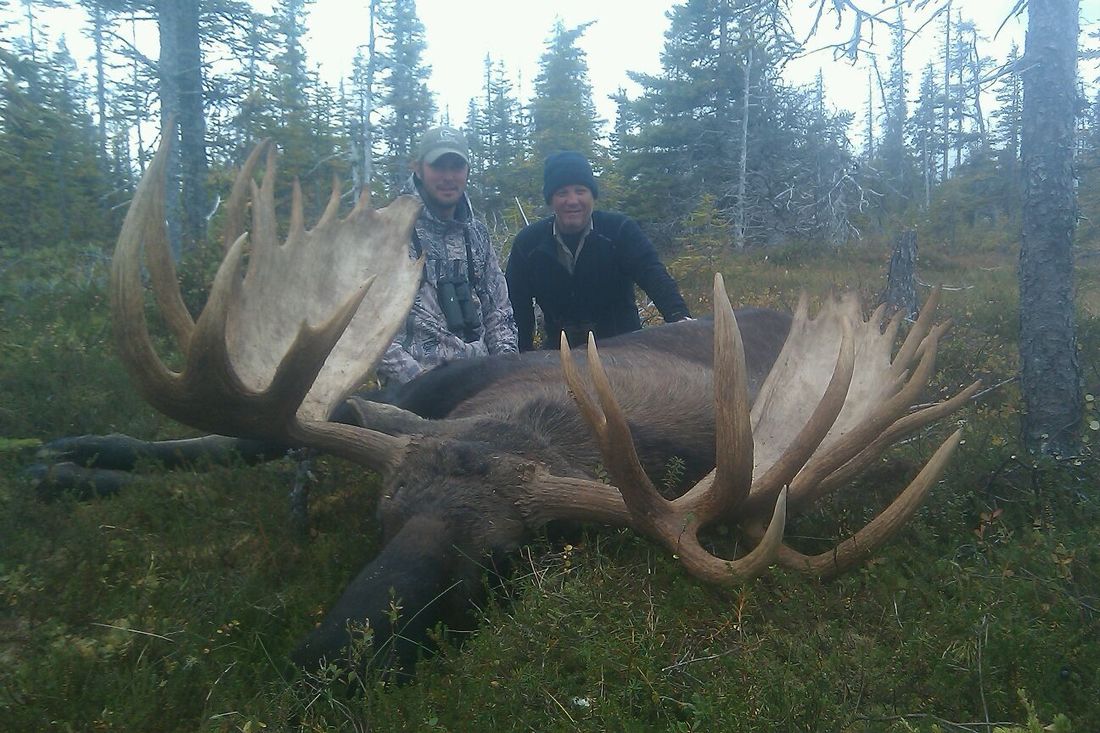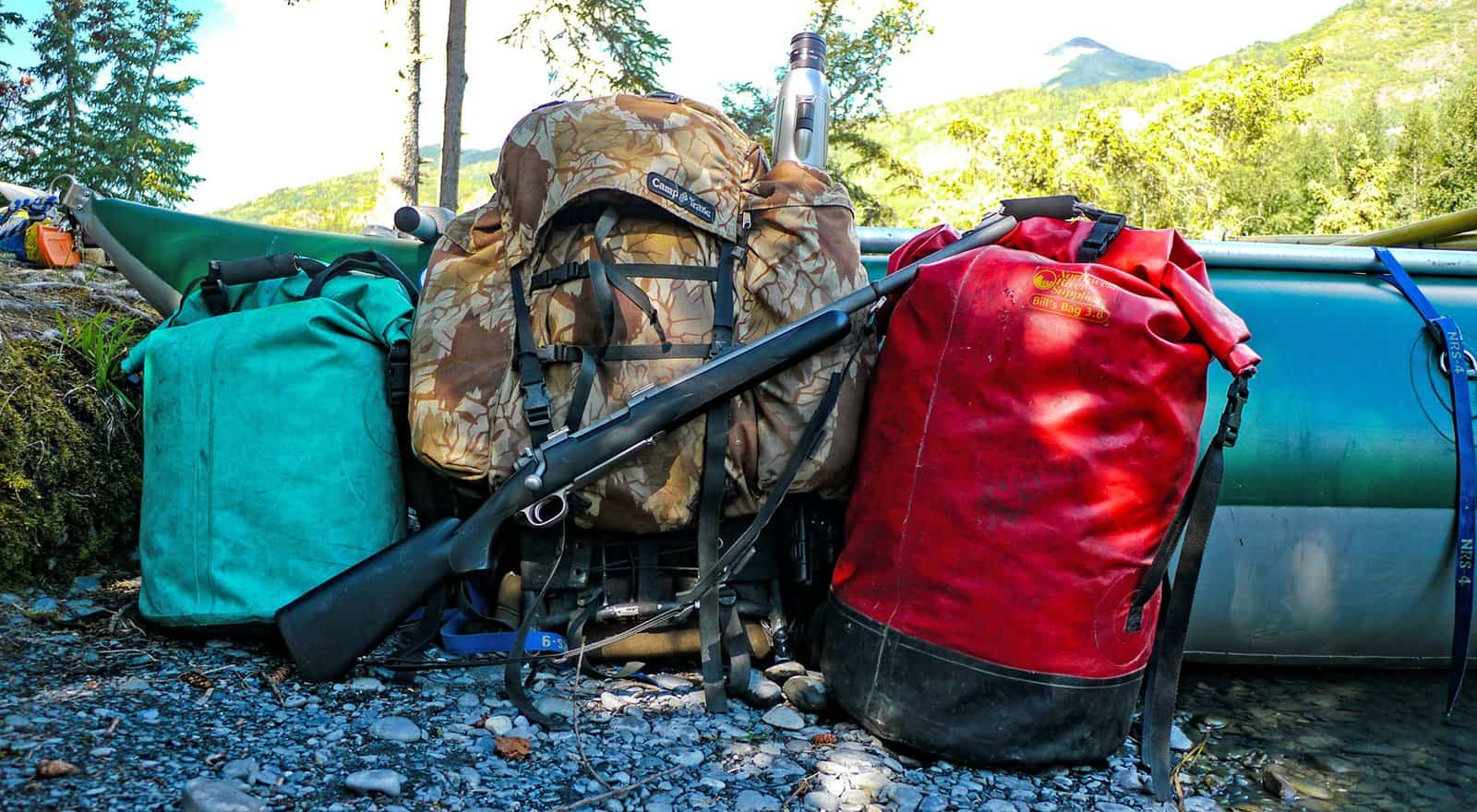For moose hunting gear, essential items include a high-powered rifle and quality hunting boots. Additional gear may include camouflage clothing, scent control products, and a reliable scope for long-range shots.
When preparing for a moose hunting trip, it’s crucial to have the right gear to ensure a successful and safe hunt. Moose are large, resilient animals that require proper equipment for a successful harvest. In this guide, we will explore the essential gear needed for moose hunting, from firearms and ammunition to clothing and accessories.
By understanding the importance of each piece of equipment and how it contributes to a successful hunt, you can be well-prepared for your next moose hunting adventure. With the right gear and knowledge, you’ll be ready to tackle the challenges of hunting these majestic creatures in their natural habitat.

Credit: www.stoneglacier.com
Choosing The Right Firearm
Selecting the appropriate firearm for moose hunting requires careful consideration of factors such as caliber, range, and terrain. A powerful rifle with a large caliber, such as a. 300 Win Mag or a. 338 Lapua, is ideal for taking down these large animals at long distances.
Other considerations include the weight of the firearm and the hunter’s level of comfort and proficiency with the chosen weapon.
Understanding Caliber Selection
Choosing the right firearm for moose hunting is crucial.
Caliber selection determines the effectiveness of your shot.
Consider using higher caliber rifles for moose hunting.
Popular calibers include .308, .30-06, and .300 Win Mag.
Considerations For Action Type
Understanding the action type is key in moose hunting.
Bolt-action rifles offer accuracy and reliability.
Semi-automatic rifles provide quick follow-up shots.
Lever-action rifles are classic and well-suited for close-range.
Optics And Sighting Equipment
Moose hunting requires a keen eye and precise aim, making your choice of optical gear critical for a successful hunt. Proper optics and sighting equipment can mean the difference between a trophy moose and a missed opportunity.
Selecting The Right Scope
When choosing a scope for moose hunting, prioritize optical clarity and magnification power. Look for a scope with variable magnification settings for versatility in different hunting conditions. A shockproof and weather-resistant scope is essential for the rugged terrain of moose country.
Backup Sighting Systems
Having a backup sighting system is vital in case your main optic fails. Consider iron sights or a reliable red dot sight as secondary options for quick target acquisition. Practice using your backup system to ensure proficiency in the event of an emergency.
Clothing And Footwear
When preparing for a moose hunting expedition, having the right clothing and footwear is crucial. The remote and rugged terrain where moose are often found demands specialized gear to ensure comfort and safety throughout the hunt. Clothing that can stand up to variable conditions and high-quality boots that provide support and protection are essential components of a successful moose hunting trip.
Layering For Variable Conditions
Moose hunting takes place in varying weather conditions, including rain, snow, and fluctuating temperatures. To stay comfortable and dry, hunters need to utilize a layering system that can be adjusted as needed. This typically consists of a moisture-wicking base layer, an insulating mid-layer, and a waterproof and windproof outer layer. The ability to add or remove layers allows hunters to regulate their body temperature and remain agile in changing weather conditions.
Importance Of Quality Boots
Quality footwear is paramount for navigating the rugged terrain encountered during a moose hunt. Durable, waterproof boots with excellent ankle support are essential for traversing through dense vegetation, crossing streams, and maneuvering through uneven terrain. Well-made boots provide stability and reduce the risk of injury, ensuring that hunters can focus on the hunt without worrying about their feet.
Field Dressing And Butchering Tools
Explore essential field dressing and butchering tools tailored specifically for moose hunting. Prepare for a successful hunt with durable and efficient gear designed to streamline the processing of your harvest. High-quality tools ensure precision and convenience in field dressing and butchering tasks.
Introduction: Field Dressing And Butchering Tools
Field dressing and butchering are crucial steps in the moose hunting process, ensuring the meat is properly cared for and stored. To carry out these tasks effectively, it is important to have the right tools at hand. In this article, we will explore the essential tools required for field dressing and discuss the key aspects of meat care in the field.
Essential Tools For Field Dressing
When it comes to field dressing a moose, having the right tools can make all the difference. Here are the essential tools you should have in your hunting gear:
- Gutting Knife: A quality gutting knife with a sharp, sturdy blade is essential for opening up the moose’s abdominal cavity quickly and efficiently.
- Bone Saw: This tool is used to cut through the moose’s pelvis and ribcage, making it easier to remove the internal organs.
- Game Bags: Game bags are vital for storing the moose meat and protecting it from dirt, bugs, and excessive heat, ensuring its quality remains intact.
- Latex or Nitrile Gloves: Wearing gloves during field dressing helps prevent the spread of bacteria and diseases, ensuring your safety and the quality of the meat.
- Knife Sharpener: A sharp knife is crucial for clean cuts, minimizing the chance of contaminating the meat. A portable knife sharpener ensures your knives stay razor-sharp.
- Cord or Rope: You’ll need a strong cord or rope for securing the moose’s legs or hanging the meat to cool and age properly.
- Trash Bags: Bringing along some sturdy trash bags can help with disposing of the carcass, keeping the surroundings clean.
Understanding Meat Care In The Field
Proper meat care in the field is essential for preserving the quality and flavor of the moose meat. Here are a few key points to keep in mind:
- Cooling the Meat: After field dressing, it’s crucial to cool the meat as quickly as possible to prevent spoilage. Hang the quarters in the shade, ensuring good air circulation.
- Removing Internal Organs: Take special care while removing the internal organs to avoid puncturing them and contaminating the meat. Keep your gutting knife clean and sharpened for precise cuts.
- Minimizing Hair Contamination: Carefully remove any hair or debris from the meat to prevent unwanted flavors and contamination. A clean, damp cloth can help with this task.
- Aging the Meat: Aging the meat for a few days at a temperature of around 34 to 38 degrees Fahrenheit (1 to 3 degrees Celsius) helps improve tenderness and flavor. It’s essential to protect the meat from insects and excessive moisture during this process.
- Safe Transportation: When transporting the meat, ensure it is properly wrapped and secured in airtight packaging to prevent spoilage and protect against potential cross-contamination.
Safety And Navigation
When embarking on a moose hunting adventure, safety should always be your top priority. It is essential to be well-prepared with the right gear to face any unforeseen circumstances that may arise during your expedition. Additionally, ensuring proper navigation in the wilderness is crucial to avoid getting lost or disoriented. In this section, we will explore two important aspects of moose hunting: emergency gear and first aid, as well as navigational aids for wilderness.
Emergency Gear And First Aid
Having the right emergency gear and first aid supplies can make a significant difference in critical situations during your moose hunting trip. Being well-equipped with these essentials not only ensures your safety but also provides peace of mind.
In the event of an emergency, you should have a survival kit containing basic tools and supplies like a knife, matches, a compass, a flashlight, and a whistle. These items can prove invaluable in dire situations and help you navigate through unexpected challenges.
A first aid kit is a must-have for any hunting expedition. It should include essential supplies such as bandages, antiseptic wipes, pain relievers, tweezers, and adhesive tape. In case of injuries, proper wound care is crucial, allowing you to attend to minor wounds promptly.
Navigational Aids For Wilderness
Navigating through the vast wilderness during a moose hunting trip requires careful planning and the use of navigational aids. These tools will help you stay on track and avoid getting lost in unfamiliar territory.
Magnetic compass: Carry a reliable magnetic compass to determine your direction accurately. It will help you orient yourself and follow the right path, even in dense forests or low-light conditions.
Topographic maps: It is essential to carry detailed topographic maps of the area you will be hunting in. These maps provide valuable information about the terrain, elevation changes, water sources, and other landmarks. Study the map before heading out and ensure you have a good understanding of the area.
To enhance your navigation further, you may consider incorporating GPS devices into your gear. These devices can provide precise coordinates, track your movements, and help you retrace your steps if needed. However, it’s important to remember that technology may not always be reliable in remote areas, so having a traditional compass and map as backup is sensible.
By ensuring you have the necessary emergency gear and navigational aids, you can maximize your safety and navigate confidently through the wilderness during your moose hunting expedition.

Credit: www.adventureoutfittersalaska.com

Credit: www.petersenshunting.com
Frequently Asked Questions On Moose Hunting Gear
What Gear Do You Need For Moose Hunting?
To have a successful moose hunting trip, you will need essential gear such as a high-powered rifle, quality optics, appropriate clothing for different weather conditions, a good backpack, and a reliable hunting knife.
What Type Of Rifle Is Best For Moose Hunting?
When it comes to moose hunting, a rifle with a larger caliber is recommended. A. 30-06 Springfield or a. 300 Winchester Magnum are popular choices. These rifles provide enough power and accuracy to take down a big game animal like a moose.
Is Camouflage Necessary For Moose Hunting?
While not mandatory, wearing camouflage clothing can greatly improve your chances of getting close to a moose. Moose have excellent eyesight, and camo helps you blend into the surroundings, making it easier to approach your target undetected.
Do I Need A Special License For Moose Hunting?
Yes, you will need a specific hunting license for moose hunting, which varies depending on the state or province you plan to hunt in. It’s essential to research and obtain the appropriate licenses and permits before heading out on your moose hunting adventure.
Conclusion
The right moose hunting gear can make all the difference. With the proper equipment, hunters can increase their chances of success and ensure their safety in the wilderness. From clothing to firearms, choosing the best gear for your specific needs is crucial for a successful and enjoyable hunt.
Remember to research and invest wisely in high-quality gear to maximize your hunting experience.



